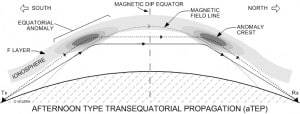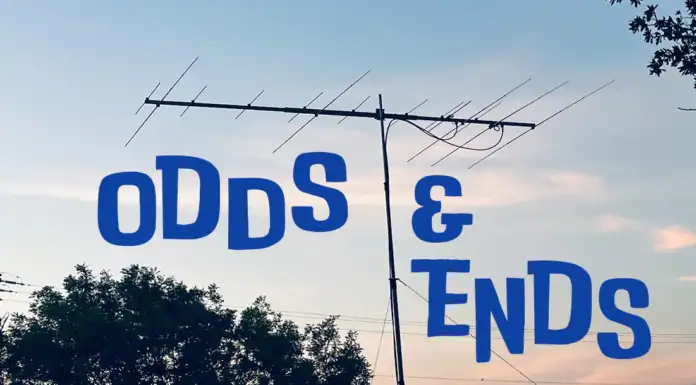You may have read my previous posts about getting more involved with VHF and in particular 6 meters. After my latest encounter with the Magic Band of 6 meters it appears that she is sending out her welcome carpet for me. The latest escapade? Transequatorial Propagation!

This past weekend I had DX Maps up and running watching the spots on 6 meters. Late in the afternoon I started to see some TEP activity from the Caribbean and Florida but couldn’t see anything on the radio. However, at about 5 PM I spotted a couple of CW signals.
Tuning to the first one I could hear loud and clear LU4FPZ on my 6 meter dipole in my attic. Unfortunately, my 6 meter moxon had been taken down and stored. Next I worked LU3CW and LW3EX, both on CW. I heard a CE3 station on SSB but very, very weak (needed that moxon) and I noted a few signals on the JT65 frequencies. I fired up JT65 and was able to work CX5BL. At that point, things died down.
I had heard about TEP but never thought it would be something that I could work. Reading the articles at K9LA, Amateur Radio Wiki, and IPS.gov.au it appears that I had some sporadic E propagation that was getting me into the TEP that originates over the Caribbean. Fascinating propagation mode that helped me add two countries to my DXCC tally for 6 meters. I think I’m up to about 6 or 7 now.
What a fun band. Now I need to get the moxon up on a rotator on a permanent basis to take advantage of these types of events. If you haven’t tried 6 meters yet, check it out. Lots of down time but oh what fun when things take off. You might even call it “magic.”







[…] E layer skip into Transequatorial Propagation. You’ll recall that I’d experienced TEP before into Argentina and Uruguay. But, this is simply amazing to […]
[…] Transequatorial Propagation — Wow! from September 2014 using mostly CW and one JT65 QSO. […]
[…] Transequatorial Propagation — Wow! […]